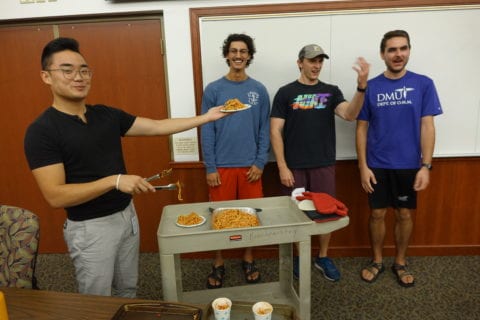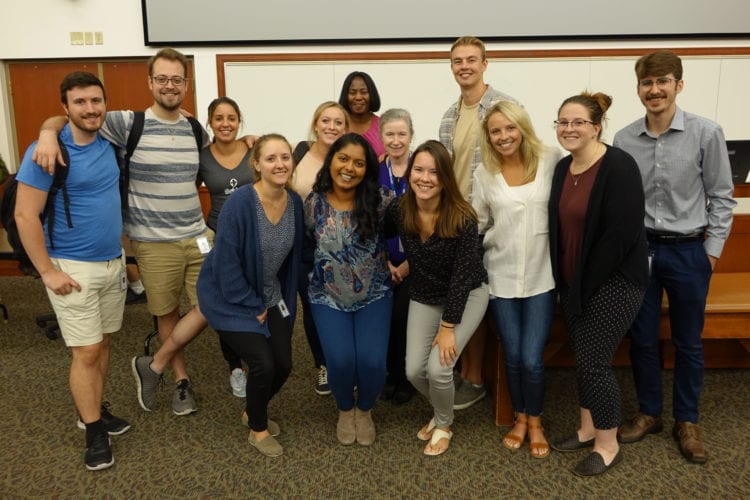
On a recent Wednesday morning at Des Moines University, second-year osteopathic medical students were putting the finishing touches on finely tuned dishes to serve to their classmates. This was no luncheon or dinner-party prep; rather, the students were completing an assignment in their Preventive Medicine and Nutrition course.
The course emphasizes the role that combined skills in clinical prevention and medical nutritional therapy can play in the successful treatment of patients. In one of the course’s highly hands-on lessons, groups of students received a patient case for which they had to make a provisional diagnosis and then develop a meal the patient can make that will help with his or her condition.
Engaging students in actual, real-world meal preparation in a nutrition course is rare among medical schools, says Maria Barnes, Ph.D., assistant professor of biochemistry and nutrition. She co-teaches the course with Noreen O’Shea, D.O., FAAFP, assistant professor of behavioral medicine and a family physician.
“We want students to learn ways that nutrition can be an option for treating a patient, and that treatment doesn’t always have to involve medications,” Dr. Barnes says.
Each student group is allotted $30 to prepare a meal that can be served in small portions to one-third of their class. On that recent Wednesday, the student groups were ready to present their cases and meals. As some members of each group laid out small servings for their classmates to try, two group members presented their case, their provisional diagnosis and the meal they came up with along its nutritional content and cost per serving.

In one case, a 22-year-old nursing student presented with colitis secondary to traveler’s diarrhea, which had led to weight loss. The group recommended a high-fiber beef stew chockfull of iron, protein and carbohydrates as well as a yogurt and fruit smoothie as a snack. The cost for all of the ingredients for the stew and smoothie was $20.39. This patient could have five servings of the stew at $3.42 per serving and two servings of the smoothie at $3.30 per serving.
“One of the takeaways from the class is an appreciation for the cost of food,” Dr. Barnes says. “Students are required to not only think about nutrition as a way to treat their patient, but also to make it affordable. Salmon is a great source of protein and other nutrients, but not everyone can afford it.”
Another takeaway is considering patients’ circumstances beyond their immediate health issue. In one case in the class, a 74-year-old woman, recently widowed, presented with cirrhosis of the liver, increased alcohol consumption and possible depression. Her group of students provided recommendations that included her connecting with a widows’ support group in addition to proposing a meal of veggie-packed slow-cooker white chicken chili that provides several of the nutrients she could be deficient in.

Being able to offer patients specific recipes relating to their health can also be part of effective care.
“That can make physicians and the care they provide more personal,” says Dr. O’Shea. “You can give the patient a recipe and share ways the patient can prepare it as well as challenges you’ve dealt with in your own meal preparation.”
The meal-prep assignment challenges students to incorporate a holistic nutrition approach in patient care, says Troy Dolmetsch, a student in the course.
“I was happy with the meal that our group prepared because it was a nutritious improvement from the patient’s current diet, affordable, time-efficient and in alignment with the patient’s cultural factors,” he says. “The takeaway from the assignment is that proper nutrition recommendations incorporate a multi-factorial approach to best support the patient and result in good patient adherence.”


